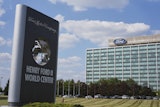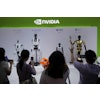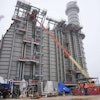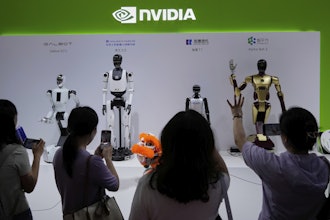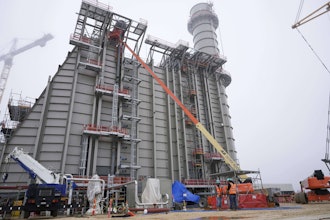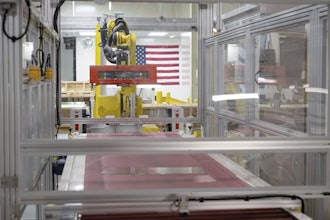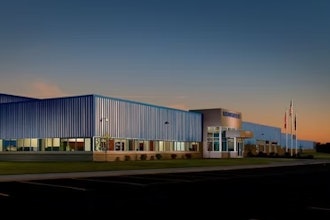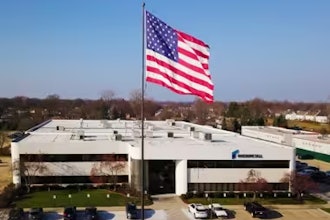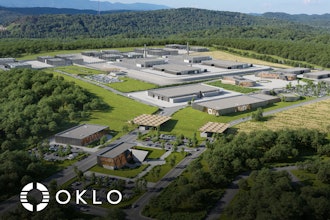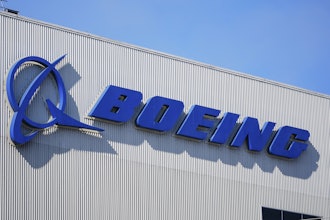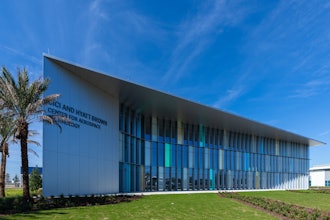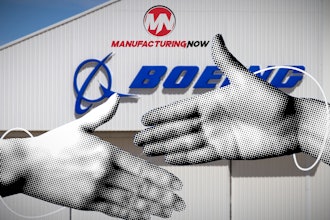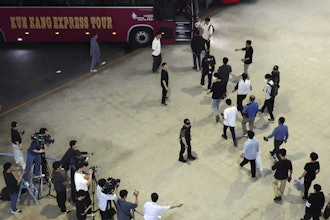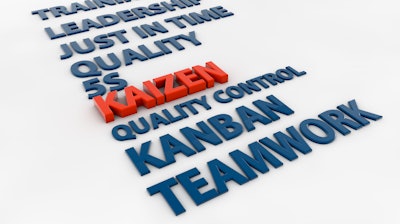
The way Presto Lifts, Inc of Pawtucket, RI got their stackers and lift tables out the door changed significantly starting in early 2000. The nearly 50-year-old company, along with material handling equipment manufacturers Blue Giant and Long-Reach, were purchased by TBM Holdings, a division of the TBM Consulting Group, a leading advocate and practitioner of the Kaizen continuous improvement method.
"At Presto," assesses Bill Schwartz, president of TBM Holdings, "the big change is we went from a fabrication shop that made parts in big batches to one-piece flow lines, which provide better responsiveness. Now, you have a supermarket of parts in a weld cell. The parts that are welded in the morning move to the paint booths, followed by assembly that afternoon. Therefore the work flow operates through the line in 36 to 48 hours."
The transformation toward this more focused method of production took place in a deliberate series of steps as Kaizen events, a method of achieving lean manufacturing. The result, a noticeable change for the customer, is the Always in Stock (AIS) Program, through which dozens of Presto Lift products are shippable within 24-48 hours. Imperceptible to the market, however, were the cultural shifts that made this aspect of Presto Lifts' service possible.
As a consulting business, TBM Holdings has brought the benefits of Kaizen to a number of companies throughout the US during the past 15 years, including Pella Windows, Michelin, and Maytag. With Presto Lifts and the other companies within TBM Holdings, TBM saw not only an investment opportunity but an opportunity to acquire their own laboratories, to refine their concepts in the area of heavy manufacturing. In turn they could develop a showcase for potential clients as strong proof that these methods worked for TBM in its own investments. Yet, as with outside clients, TBM had to deal with the skepticism that is typical from both management and employees
"They're always suspicious at first," notes Schwartz. "What happens with a plant of 200 people is you are starting with Kaizen Teams of ten, and it takes you awhile to get people exposed and comfortable with the process. They think it's a productivity game, they think people are going to lose their jobs, they think all the bad things."
The solution, according to Schwartz, is "you have to teach them, and you do have to increase your communication that this is a good thing for the company to be competitive This is how we're going to grow."
The Kaizen Champion
When looking at a potential client, TBM Consulting personnel immediately seek out the spark plug that will propel the process internally. Knowing that, as an outside consultant, they cannot do the process for the client or make it last, Schwartz explains, "Typically we don't want to engage a company unless they have an identified champion, someone who asks what does it take to do this and says they are committed to change."
At Presto Lifts, the role of champion fell to Al Lavoie. Appointed KPO (Kaizen Promotion Officer) just several months after the company was acquired by TBM, Lavoie had prior experience in the discipline.
Upon his arrival, Lavoie found that not unlike many other factories, "the place was very unorganized. There was inventory everywhere. Not even the aisles were identified ... The factory was one big batch and that's how they did everything."
In the highly competitive markets that Presto Lifts sells to, numerous companies offer stackers and scissors lifts. One way to differentiate Presto from all the others was to get product that is essentially build-to-order to the customer's dock in days rather than weeks. Lead time is a driving force that determines success or failure in satisfying customers' needs.
Lavoie's mission, with the help of consultants from TBM, was to transform the operation into one that flowed. To create this flow, the Kaizen principle sends those who follow it on a constant hunt to track down and eliminate waste. In the manufacturing process the biggest waste tends to be time.
All the way back to the days of efficiency expert Fredrick Taylor, companies have been paring waste from the manufacturing process through classic top-down management. Kaizen, when done consistently and regularly, turns the quest into one involving both employees and management. The "search and eliminate waste" mission becomes imbedded in the company's collective consciousness, and it becomes a way of life.
Over the past 18 months, Presto Lifts has conducted monthly Kaizen events in which a team of people study intensely how product is made and make the necessary changes to improve the process and cut waste.
In that time period, the operational focus has shifted from manufacturing processes to product lines. Rather than having an area for welding, another for painting, one for assembly and finally packing and shipping, the concentration is on creating production cells for each product family where all these functions happen within a short distance of one another.
A Kaizen Event
During a Kaizen event in mid-2001, the team focused on creating a stacker production cell. The challenge was to set the cell up so the plant could efficiently produce the four types of Presto Lifts stackers, yet coordinate processes for products that may take anywhere from 1-6 hours to assemble.
Two weeks prior to the event, Lavoie recruited a Kaizen team of 10 people from the factory and the office. The team was composed of employees who work in the cell, but the participation of personnel from other departments insured that these changes would happen companywide.
The week started out at noon on Monday with a generic Kaizen training session that runs about six hours. Even if someone has participated in a previous event, the discussion never fails to light up a new set of ideas.
Part of that day was spent learning the intricacies of just watching, how to evaluate a process, and how to time the process. With stopwatches in hand, the team intently timed Lavoie getting up from a chair and walking to the front of the room. The exercise is not as easy as it sounds -- as Lavoie observes, "You have to do it a couple of times, because I can hear the stopwatches clicking off and on out of sequence. It's a lot of fun."
Tuesday was the "day of discovery" as the team paired off to observe the way stackers were currently produced. The team observed everything from the amount of floor space, to the time it takes to assemble a variety of units, to even the amount of waiting and walking time. This day is very important. Unless every stone is turned over, important steps can be missed that could prevent the event from being a success.
The team observed a fabrication shop making parts in big batches that were put in stock. Typically, when parts were needed, the weld shop would pull them out of stock; the welded parts would then be pushed toward the paint shop to build up a quantity of WIP.
The paint shop would paint the parts and push them into what they called the swamp, with anywhere from 50 to 150 units drying and waiting for final assembly. The final assembly groups then pulled the units out of the swamp and built the product. Four to six weeks from receipt of purchase order, the product would be ready to ship.
On Wednesday, the team went to work on a very long day that stretched to near midnight, moving the benches, booths, and racks that would comprise the stacker cell. They rearranged the cell into the approach that the team had come up with, based on their observations from the day before.
What the Kaizen team developed as a solution involves a single employee pushing a cart and pulling parts for a pick list. The job is to pick all the assembly parts for the unit and accumulate all the parts for the complete unit in that cart. "They found," relates Lavoie, "that it is much more efficient to get one cart with all the parts to build the unit so that employees don't have to fish through a pile of parts." The selected parts are then brought over to the weld area.
"Simply, when that cart is empty, the unit is complete," says Lavoie.
The process was intended to minimize motion. Producing the range of stackers in this one cell requires an array of weld fixtures. Rather than storing them across the plant on shelving along the wall, the team moved them all into the weld cell. Now the welders walk no more than five feet; the fixtures are right in the cell with them.
Lavoie goes on to describe the process. "Picture peeling the roof right off the building, so the only thing in it is two weld tables (where there were formerly six), with all their weld fixtures in there, surrounded by curtain, and 25 feet away is the paint booth. Production floor space can be cut down to just 30% of the original layout."
After the unit is welded, it comes right out of the cell and goes right into the paint booth, which is within close proximity to the welding station. It is then immediately painted and made ready for assembly in an assembly area located 20 feet from the paint booth. And from there it goes to the shipping dock. So those units are welded, painted, assembled, and put on the shipping dock for shipping. Most of the internal movements have been minimized.
Thursday was devoted to retiming activities within the cell. The consultants from TBM drew up a spreadsheet to track the progress of the variety of stackers to coordinate build times and resources. Team members watched the processes and then they made further improvements and refinements.
Friday is the day of celebration on which the changes are documented and the successful completion of the process is - celebrated.
Unlike other management processes that have the goal of reduction in workforce as a means of economy, Kaizen recognizes that people are key to making this work and that the process cultivates a whole plant full of waste-reduction experts. Between Kaizen events, employees continually stop Lavoie with ideas for changes. This respect for the employee is bedrock in the Kaizen approach. TBM demands, in working with clients, that their contract carry a clause stating no jobs will be lost as a result of Kaizen.
Kaizen is becoming a way of life at Presto Lifts, and a must in a workforce that once may have been a little skeptical about the changes, but now wouldn't have it any other way.
